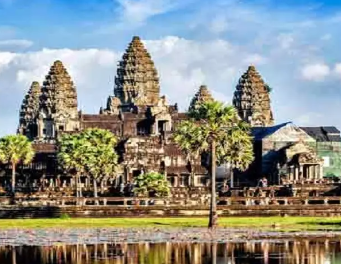Angkor Wat Named Most Photogenic UNESCO Site in Asia
Cambodian Prime Minister Hun Manet shared exciting news: Angkor Wat was named the most photogenic UNESCO World Heritage site in Asia by Times Travel. This recognition was highlighted in a list published by the Times of India, which also included other famous landmarks across Asia.
What other sites were included in the list?
The top ten most photogenic UNESCO World Heritage sites in Asia included these stunning locations:
- Taj Mahal (India) – Known for its breathtaking beauty and marble architecture.
- Hampi (India) – An ancient city filled with temples and historic ruins.
- Great Wall of China (China) – A monumental structure with scenic views.
- Ancient City of Bagan (Myanmar) – Famous for its thousands of temples and pagodas.
- Borobudur (Indonesia) – The world’s largest Buddhist temple.
- Ha Long Bay (Vietnam) – A bay known for its limestone islands and emerald waters.
- Historic Monuments of Kyoto (Japan) – Includes beautiful temples and gardens.
- Petra (Jordan) – A city carved into the rock, known for its unique architecture.
- Rice Terraces of the Philippine Cordilleras (Philippines) – Stunning, centuries-old rice terraces built into mountains.
These sites are known for their cultural significance and beauty, making them perfect subjects for photography.
Tourism Insights
Angkor Wat is Cambodia’s most visited tourist attraction. In the first eight months of 2024, it welcomed 651,857 international visitors, a 30.7% increase compared to the previous year. During this time, ticket sales generated $30.3 million, showing a 31% growth in revenue. This highlights Angkor Wat’s importance as a cultural and historical destination, making it a must-visit site in Southeast Asia.
About Angkor Wat
Angkor Wat was built in the early 12th century and is the largest religious monument in the world. Originally dedicated to the Hindu god Vishnu, it later became a Buddhist site. The temple complex spans over 162 hectares (around 400 acres) and includes more than 5,000 sculptures. Its unique layout represents a miniature model of the universe in stone. Despite its grandeur, Angkor Wat was largely forgotten by the Western world until the 19th century. The temple’s walls feature bas-reliefs that depict historical and mythological stories. Since 1992, Angkor Wat has been recognized as a UNESCO World Heritage Site.
Month: Current Affairs - September, 2024
Category: Art & Culture Current Affairs


